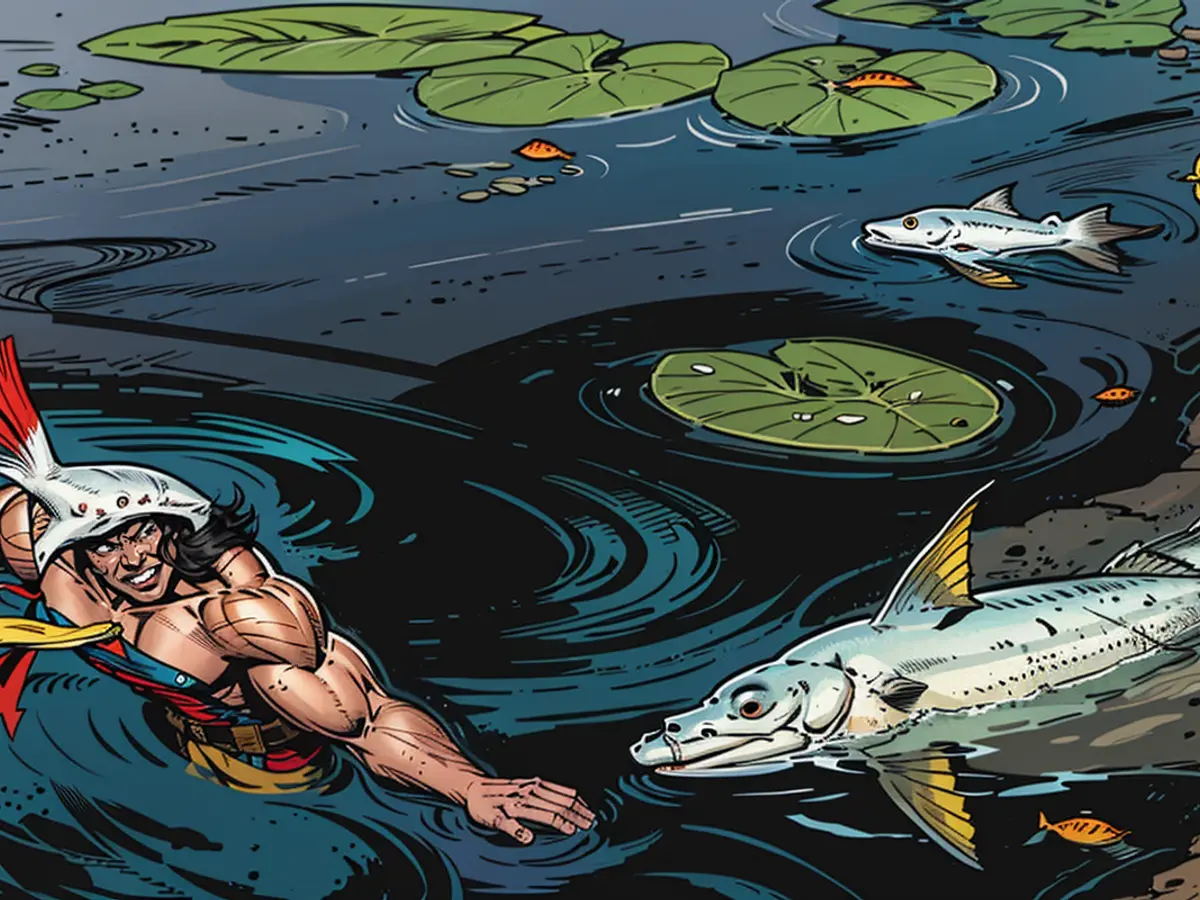Surroundings or the natural world - The rise of toxic golden algae is leading to more dead fish being found in the Oder.
Dead fish found in Oder River after golden alga resurfaces two years after environmental disaster.
Dead fish have been discovered in the Oder River, two years after a major environmental disaster in the German-Polish border river. The toxic golden alga that caused a significant fish kill in the summer of 2022 has returned. The Brandenburg State Environmental Office is set to discuss further steps on Wednesday. Poland is also looking to curb the spread of golden alga.
At the Winterhafen in Frankfurt (Oder), dozens of dead fish were seen between water lilies on Tuesday, including Zander and Pike, measuring up to 60 centimeters in length. There were also dead mussels and snails floating on the water surface.
The State Environmental Office revealed on Tuesday evening that there had been an extensive growth of algae for several days, with Prymnesium parvum being the main culprit. So far, only a few dead fish have been reported, prompting the agency to issue a warning level 3 in their alert system. This assumes the presence of an algal bloom by Prymnesium parvum, and regulates action requirements.
The factors believed to have contributed to the mass fish kill in the Oder in August 2022 were a high salt content, low water levels, high temperatures, and the poison from the golden alga.
The State Environmental Office further stated on Tuesday that, despite the projected increase in water levels over the weekend, there was no significant change in the values for electrical conductivity, an indicator of salt content. Measurements such as pH value and oxygen also showed signs of typical algal growth, according to the agency. Consequently, a cautionary measure was advised - not to use any outlets from the Oder that lead into the Oder-Spree Canal.
The Polish Environmental Ministry had announced in May that officials planned to raise water flow to hinder the spread of the golden alga, which was previously introduced into the river from the Gleiwitzer Canal.







